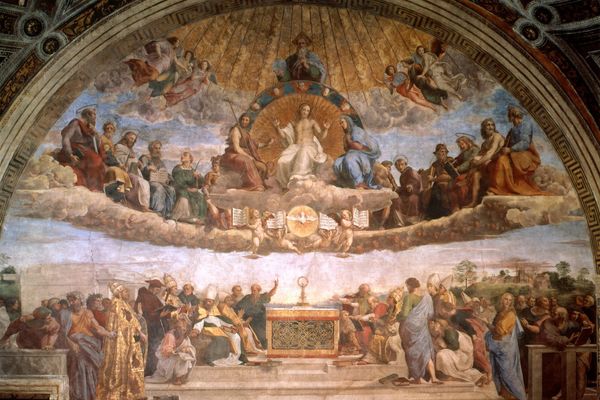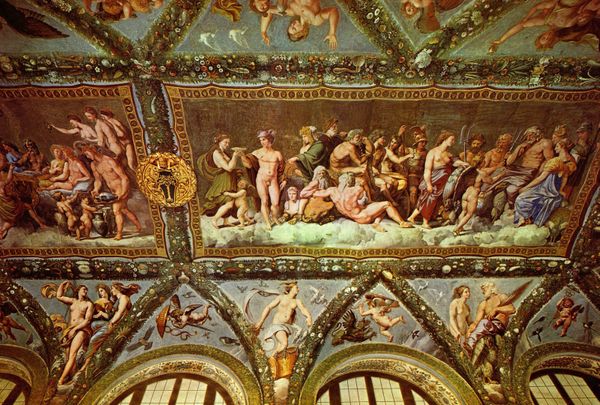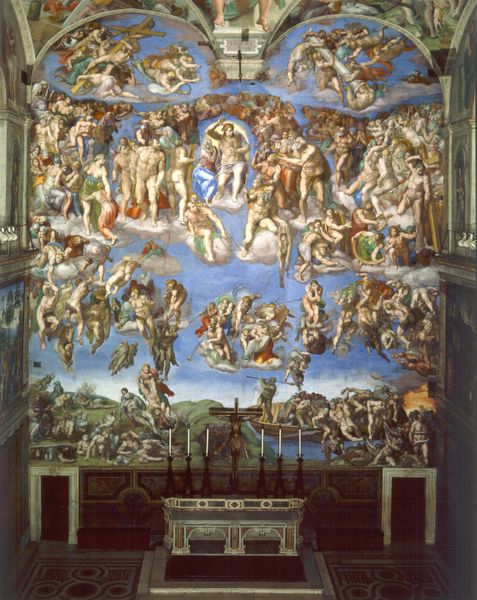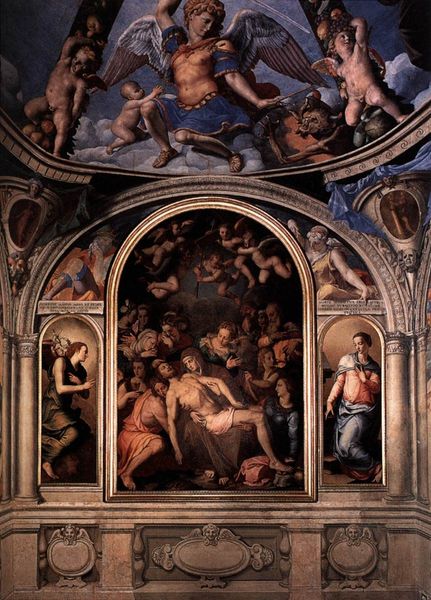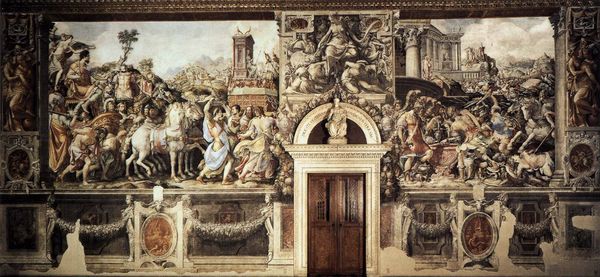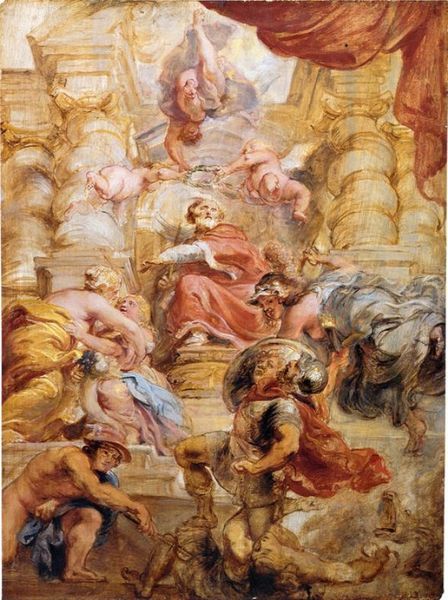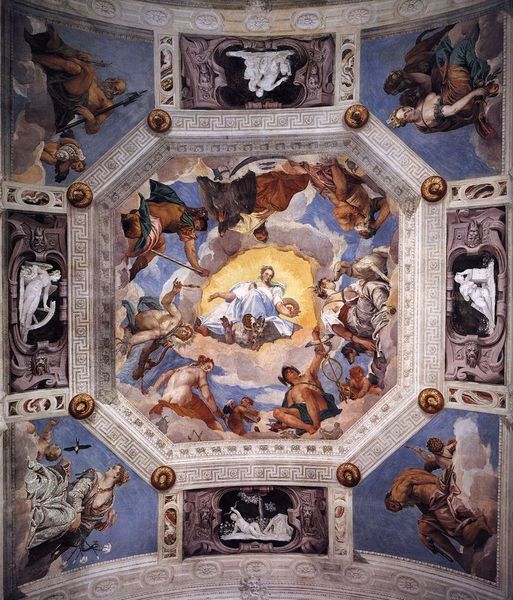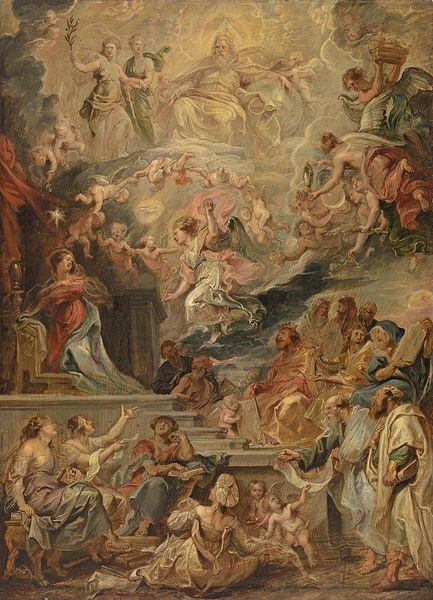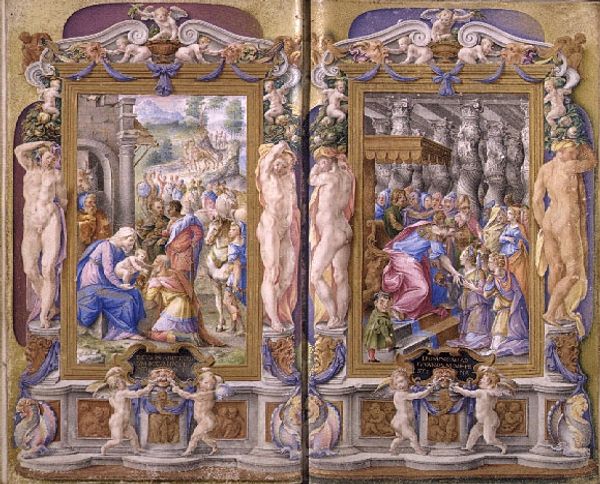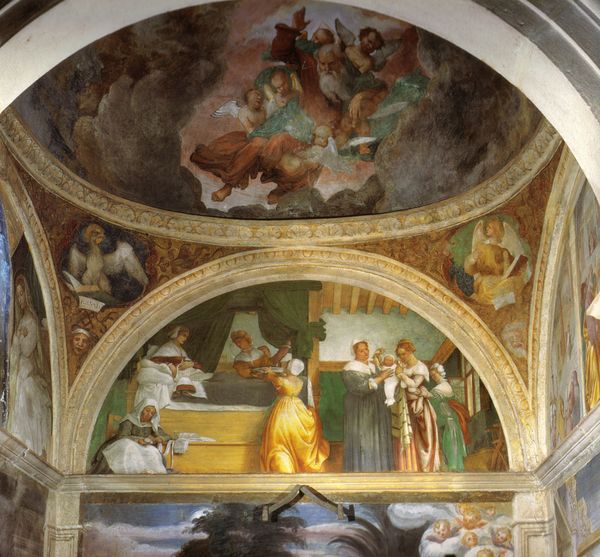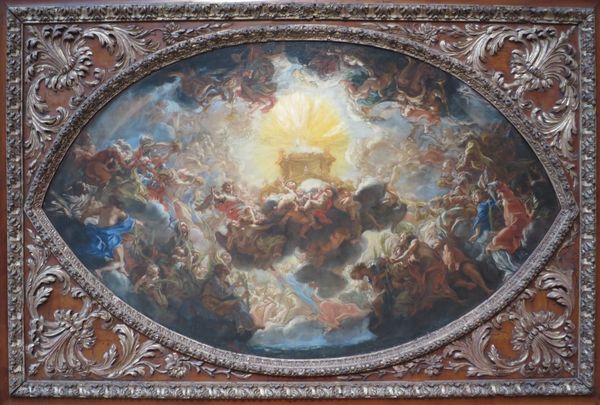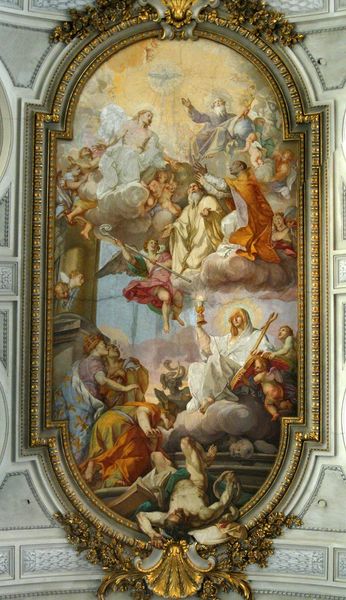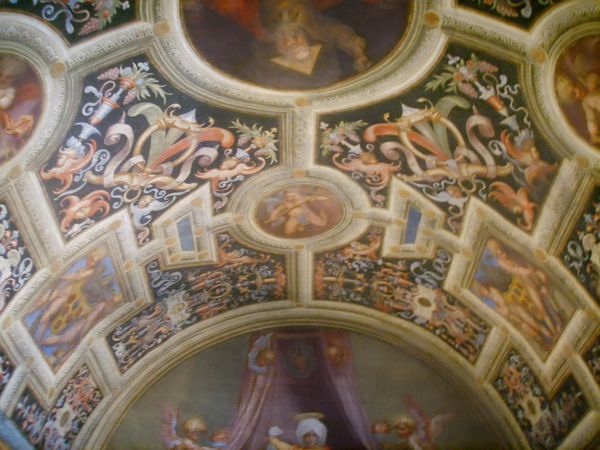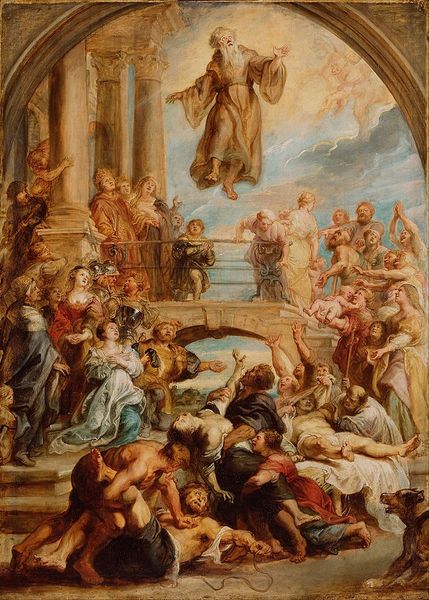
painting, oil-paint
#
byzantine-art
#
venetian-painting
#
allegory
#
painting
#
oil-paint
#
landscape
#
perspective
#
mannerism
#
figuration
#
historic architecture
#
11_renaissance
#
traditional architecture
#
group-portraits
#
history-painting
Dimensions: 904 x 579 cm
Copyright: Public domain
What is propaganda? How are propaganda and art related? This oil on canvas painting by the Italian artist Paolo Veronese (1528-1588) is a prime example of the use of art as a tool to influence viewers during the Renaissance. The work was commissioned for the ceiling of the main hall in the Doge’s Palace, Venice. This landmark was a centre of government, where many important meetings were hosted. It makes sense that the Venetian government would want a painting to glorify the city! Veronese’s response was this huge oil painting, ‘Apotheosis of Venice’ (1585). Apotheosis means elevating someone to divine status. Here, Veronese depicts a personification of the city of Venice on a majestic throne. Venice is shown as an elegant young woman in fantastically luxurious clothing. The winged goddess Victory, wearing pale pink robes, flies above her. Victory holds a golden crown; she is just about to place it on the head of Venice. The allegorical figure of Venice is placed in the very centre of the canvas, suggesting her extreme importance and power. She is surrounded by figures who all gaze towards her, directing the viewer’s eyeline. These figures include several ‘putti’, or winged naked children. They might remind you of cherubs. The word ‘putti’ comes from the Latin word for boy. Each individual figure is arranged in a dynamic composition, to suggest movement and energy. It’s all very dramatic! The scene is set on a beautifully ornate marble balcony. In the background, we can see a vivid blue sky complete with delicate clouds. This is a symbol of heaven, once more reinforcing the divinity of Venice. The overall impression is one of impressive majesty. So, why would Veronese and his commissioners want to glorify the city of Venice in this way? In the 1580s, Venice was an important Republic which acted as a centre of trading and culture. The city had enormous economic power, and a complex political system. By commissioning such a striking painting for the city’s halls, the government was making a strong statement about their godly power. So, what do you think? Is this a successful representation of Venice, or is it too over the top?
Comments
No comments
Be the first to comment and join the conversation on the ultimate creative platform.
